BF Auction: 1962 Daimler SP250
UPDATE – We just heard from the seller that they applied for the title and it’s on its way from the California DMV. They also sent photos of the correct convertible top, which you can find in the gallery below.
When Daimler unveiled its sporting Dart at the New York Motor Show in 1959, it had lofty ambitions. However, they immediately struck a stumbling block when Chrysler demanded a name change because it owned the trademark to the “Dart” name in North America. Therefore, Daimler reverted to the company’s project number, with the Dart becoming the SP250. Plans were in place to produce 3,000 cars per year, but the total fell well short of that mark. They were rare when they were new and even rarer today. Tidy examples regularly fetch healthy prices in the current market, leaving this Daimler’s next owner to choose between preservation or restoration. It is located in Newport Beach, California, and is listed exclusively on Barn Finds Auctions. Given how special these cars are, we sent a professional photographer to take photos of this Daimler, so be sure to view the detailed photos in the gallery below.
When Daimler unveiled the SP250, jaws hit the floor. The company built its reputation on producing stylish and conservative luxury models. The SP250 was an extrovert soft-top sports car with an eye-catching appearance, including a pair of what appeared to be the largest fins to grace a British car. In a bid to rush its new offering into the market, Daimler constructed a fiberglass body on a steel frame. However, the early cars had an inherent design flaw that unnerved a few people. The frame lacked rigidity, meaning doors could pop open under hard cornering. Those vehicles became known as the “A spec” cars, but our feature Daimler is a B-Spec model where the company addressed the shortcomings and vastly improved the car. The seller indicates the SP250 received an older repaint, but it shows the nicks and marks you’d expect with advancing age. It still shines nicely, and they feel there is no reason why the new owner couldn’t enjoy the vehicle untouched. The frame is rock-solid, with no rust or other nasty surprises. The provided underside photos also reveal the all-important B-Spec outriggers. This car also features the rare factory hardtop, which is a significant bonus in both the usability and value departments. Finding one today is nearly impossible, and those that hit the market sell for eye-watering prices. The hardtop includes a new rear glass and weatherstripping, while this sports car comes with a soft-top, boot, and tonneau. The original owner didn’t tick many boxes on the options list when ordering this classic, so there are no wire wheels. They also passed on the optional front bumper. I believe that was a wise decision because the SP250 looks significantly more attractive without that item. The remaining trim looks tidy for a vehicle of this vintage, while there are no glass issues.
The ace up the sleeve of the SP250 was what Daimler slipped under the hood. With a long history of involvement in motorcycle production, they brought some of that technology to a new and relatively advanced V8. Its capacity may have been a mere 155ci, but the inclusion of alloy Hemi cylinder heads meant this sweet little eight produced an impressive 140hp. This car’s original owner selected the four-speed manual transmission, meaning it could storm the ¼-mile in 16.4 seconds before winding its way to 124mph. The seller says the Daimler was part of a private collection and saw little use until recently liberated. They replaced the master cylinders, flushed the fuel system, changed the oil, and put in a new battery. The car starts, runs, and drives well, and they supply this YouTube video of it in action. You will struggle to find a V8 that sounds nicer than the one in this gem. The only immediate need they note is the buyer should fit new tires. With the existing dry and cracked items displaying a manufacture date of 1964, they are well past their best. Otherwise, it seems to need nothing.
Although Daimler marketed the SP250 as a 2+2, this photo clearly indicates rear seat passengers would find the complete absence of legroom pretty uncomfortable. Therefore, most buyers considered these classic British two-seat sports cars. This Daimler’s interior is a surprise packet. The upholstery design is the later B-Spec style, which offers a bit more support and further verifies that this is a B-Spec. The photos suggest one door trim is missing, but it is included. The remaining upholstered surfaces are spotless, as are the carpet and dash. The banjo-style wheel has a crack, but with restoration kits selling for under $100, addressing that shortcoming would be inexpensive and satisfying. The driver faces the usual array of Smiths gauges and toggle switches, but I can’t spot any aftermarket additions. With no physical damage or other issues, a few days spent in a home workshop with some high-quality detailing products should have the interior sparkling.
Fate sometimes conspires against a particular car model, which seems to be the case with the Daimler SP250. It represented the last model offered by the company before its purchase by Jaguar. That move virtually sealed the SP250’s fate, although the writing was on the wall from Day One. Daimler’s sales target was 1,500 cars during the first year, with that figure rising to 3,000 per annum in subsequent years. During five years of production, only 2,648 vehicles found homes, which was well short of expectations. Jaguar’s decision to release its E-Type sports car created an instant legend. The company saw no benefit in updating the SP250 because its production costs were higher and profits were lower. Today, surviving spotless examples of the SP250 consistently sell for more than $45,000, although a perfect car sold for $101,800 in 2014. The solid nature of this Daimler makes that figure potentially attainable following a restoration. As the seller rightly states, there is something attractive about slipping behind the wheel of a survivor-grade classic, and that is the opportunity awaiting the successful bidder. Could that person be you?
- Location: Newport Beach, California
- Mileage: 68,500
- Engine: 2.5-liter V8
- Transmission: 4-Speed Manual
- Chassis Number: 101469
- Body Number: 737-0848
- Title: Clean
Auctions Ending Soon
 2006 Ford Mustang Saleen S281 SCBid Now11 hours$15,000
2006 Ford Mustang Saleen S281 SCBid Now11 hours$15,000
 2002 Subaru Impreza WRXBid Now3 days$333
2002 Subaru Impreza WRXBid Now3 days$333
 1975 Chevrolet Corvette ConvertibleBid Now3 days$3,000
1975 Chevrolet Corvette ConvertibleBid Now3 days$3,000
 1964 Ford F-100 Camper CustomBid Now3 days$2,000
1964 Ford F-100 Camper CustomBid Now3 days$2,000
 2006 Jeep Wrangler SportBid Now5 days$10,500
2006 Jeep Wrangler SportBid Now5 days$10,500
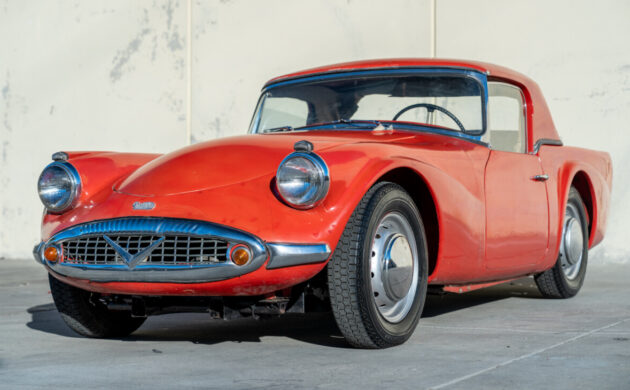


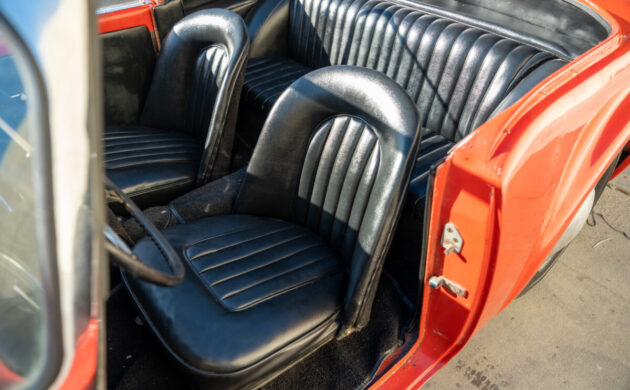


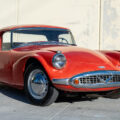
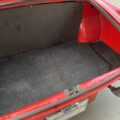

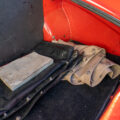
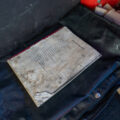
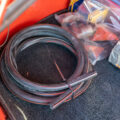

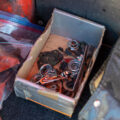
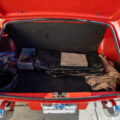

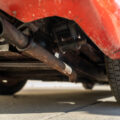
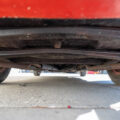
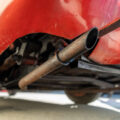
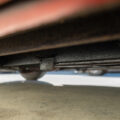
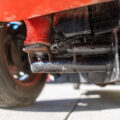
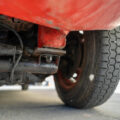
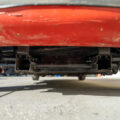


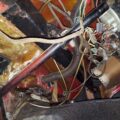
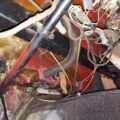
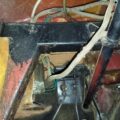
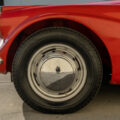
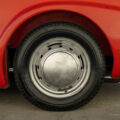
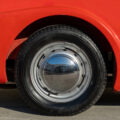
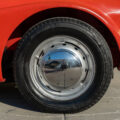
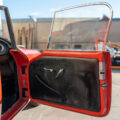
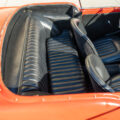
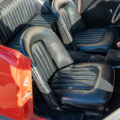
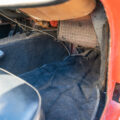

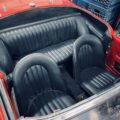
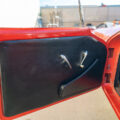
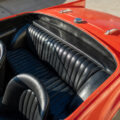



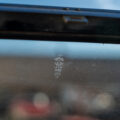
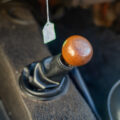


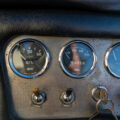
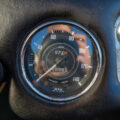

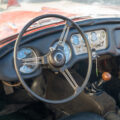


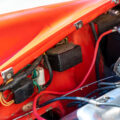

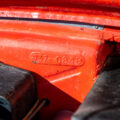
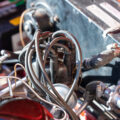
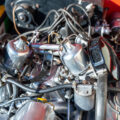
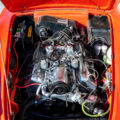
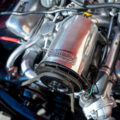
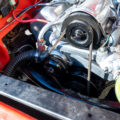
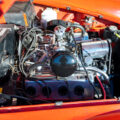


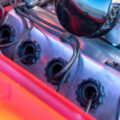


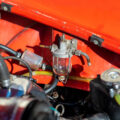
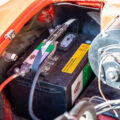
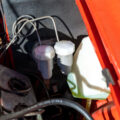
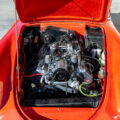

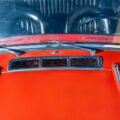
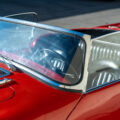
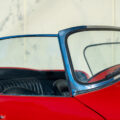
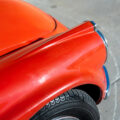


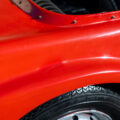
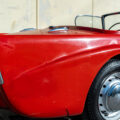
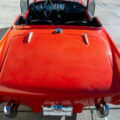


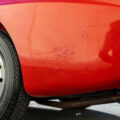
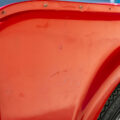
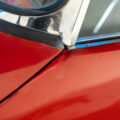


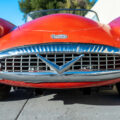

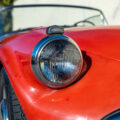


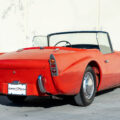

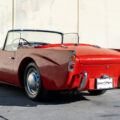


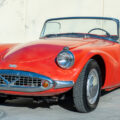

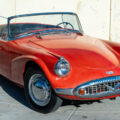
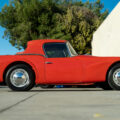


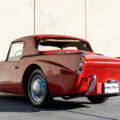
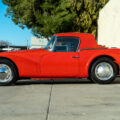

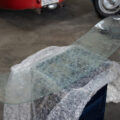
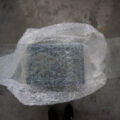



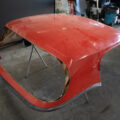

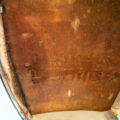
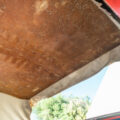


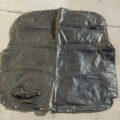

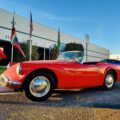
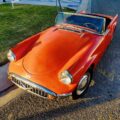


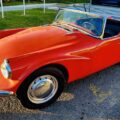
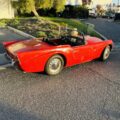
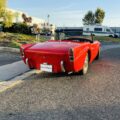

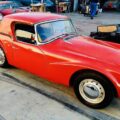



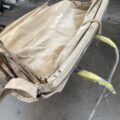
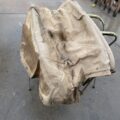

Comments
Wow, and that little V8 sounds three times bigger than what it is. I especially like the no-nonsense dash cluster, and who says the fins are big? They’re not as big as those on a Sunbeam Tiger.. The lines of the car tend to enhance their “size”
Jay Leno loves his!
Worth watching.
Even if you’re not a bidder…
Helped a friend restore his, black one that turned out beautiful. Sounded great too, until you drove it. Performance disappointing, to say the least. Guess the Hemi hype struck again. Sure is cool to look at Though. Good luck and happy motoring!
Cheers
GPC
Same engine designer as the classic Triumph motorcycle twin.
Yep, Edward Turner. Also designed the Ariel Square Four engine.
First time I saw one of these on a showroom floor I couldn’t believe a car manufacturer would design a car that looks like a catfish and make it ugly to boot.
Like a Packard Hawk, only uglier/
I wonder if an Aztek would tow this?
Had a teacher at our high school that daily drove his.
https://nihilistnotes.blogspot.com/search?q=Catfish
To be fair, the catfish look had been a thing while the SP250 was being designed. After Jaguar took over they flirted with the idea of a restyled SP252 which look something like a blend of MGB and DB4 but decided they really wanted the capacity to produce more Jaguars. The engine lived on until 1969 in the Daimler version of the Jaguar Mark 2 and it really should have been used in the Triumph Stag and it could have been enlarged to 2.8 liters to take advantage of tax rules on the continent. With the Daimler V8, the Stag’s story would likely have been very different.
Where did this post come from? See, this site does some goofy things. “That thing got a hemi”? Mmm-hmm,,,big deal, pure fluff, just like the American version. I like most cars for what they are. While mechanicals are pretty universal, it’s the styling that really makes me wonder who, if anyone, sees any attraction and how it got marketed at all? Naturally, AMC is the front runner there in American cars, but the Europeans did some wacky stuff too. Mechanically, a V8 sports car like this has got to be a blast to drive. Being a mere shred of it’s American fire breathing cousin in hp, it wasn’t about neck snapping power, just a smooth ride. I never understood car designers infatuation with fish, I think some of the grossest creatures on the planet. French did it, the Sabra had it, just not for me. It’s an unusual car, the 400 pictures are a nice touch, and is that an MG heater? Nuff said there,,still a neat find and a great writeup, well worth the $100 bucks,( R. Nelson a big spender),and again, it would be nice to know who spent the time to research these unusual cars. Please staff, don’t forget that, eh?
There’s one of these about a mile down the road from me just sitting outside next to a shop. It’s been there for years.
Where is that car located?
Besides the obviously polarizing looks this car has the same philosophy as an Italian car where the car is designed around a jewel of an engine. A true pity that this engine existed and didn’t find its way into more British classics. Instead we got the Stag!
The engine did make it into a Jaguar sedan eventually.
Although the SP250 was less of a flop than the Stag and redeemed by its engine, it was still a flop. The Daimler V8 engines were often chosen by UK hotrodders in the 1970s.
Yes, hard to believe how this design got final factory approval, but then again, this is one among several British designs of the day that missed the mark. Another example being the Austin Atlantic that was also “designed for the American market”. Daimler at the time was making heavy losses and this was a last ditch attempt to cash in on export sales, mainly the US market. It was the company’s first true sports car.
The SP-250 was rushed to market with Daimler premium pricing. The frame is a copy of Triumph TR2 and fibreglass was untested in UK for expensive cars. It was positioned as a tourer rather than a sports car and struggled for sales…. looks not helping.
But, that is then! This car looks great, much better with steel wheels and should represent good value for a buyer who wants something (very) different. GLWTA.
I like it! Driving down the road these days is about as mind-numbing as it gets with all of the potato shaped ‘Transportation Units” in boring colors surrounding you. All of a sudden, this SP 250 roars by. Just made my day!
Cool and rare ride that I would like to have in my garage. Great video.
If one car deserves the price for one of the ever ugliest built
this thing is right on the point.
The Stag is a bloated Spitfire with some styling attempts from
the famous 4-door saloon Dolomite sprint. without the for
torsion rigidity necessary rollbar its a nice open-end cruiser.
Wow, why all the nasty comments abut the Stag? I’ve owned mine for 15 years and love it. Once the problems with overheating were sorted (and pretty much all are now), it’s a great cruiser, comfortable, throaty exhaust, and plenty of room as well as great eye catching styling. I own a few TR’s and would never consider losing mine, although I might consider an “even swap” for the beautiful Daimler! A unique and rare car, in great condition… GLWTA!
I recall Duncan Black (of Black & Decker) running his SP-250 in the SCCA race circuit in the early 1960’s. His SP-250 was competitive against the big Healeys, hot Alfa Veloces and Porsches. IIRC, Black’s SP-250 won the E Production race at Cumberland in 1960.
The Sp250 was quick for it’s day, I am guessing more due to engine and weight than handling (chassis was basically like a TR3, serviceable, but hardly a Lotus). They started in E production, but by 1963 were moved up to C production and still won the C production championship that year.
Somewhere I have a photo of 2 customer cars together at my shop, a 1958 Packard Hawk, and a Daimler SP250. The Daimler makes the hawk look a lot larger!
As for the factory hardtop, that is one really rare piece. I’ve seen plenty of SP250 cars over the last 50+ years, but only seen a hardtop in Daimler factory photos. I kinda figured they didn’t actually make any!
One of the reasons why the 2.5 liter V8 sounds so nice is because it’s small size and lighter weight of the reciprocating parts results in a quick revving motor.
I was in England back in the summer of 1961 and remember seeing a few of them as police cars! I was told that they were a car that could catch the high speed motorcycles, so the police bought some! It’s not a pretty car but it has grown on me over time. If I had space I might consider it and I live only 25 miles away from Newport Beach CA!
“Last time I saw a mouth like that, it had a hook in it.”
― Rodney Dangerfield
Seller here. We have a correction and an update. Correction, that is not the soft top for this car. That’s for a Sunbeam Alpine. I’ll get correct photos of the top up tomorrow. Update, Our DMV service picked up the paperwork Friday and should process a California title in my name this week. Thanks
I have never seen the side guards on both sides of the mouth of the grill before. I think they make the car look better, are they factory? (Does anyone know?).
The “A” specification cars (1959-1960) had the chrome “whiskers” extending from the grill’s edges and two vertical over-riders at the rear; full bumpers were optional. The “B” spec (1960-1963; introduced after Jaguar assumed ownership) and C-spec (1963-1964) cars didn’t have the whiskers and bumpers remained an option. Some of the SP250s were supplied to dealers ex-factory with the bumpers fitted so weren’t necessarily there because the buyer ticked the box. In the years since, many have been retro-fitted.
Thank you, didn’t know the front bumpers were optional. I have seen a lot of cars without them, assumed they were taken off because they really didn’t look that great/got bent, whatever, but sounds like many may never have had them.
Kind of hope this creeps up so I don’t get non-buyer’s remorse.
its a nice car – looks different, its very rare and if you come to a classic meeting mostly you the only one sp 250 ( so its here in europe) the design – only two ways – you love it – or hate it !! the engine is a class of its own – v8, 2500 ccm, great sound and enough power to make this lightweight beauty real quick, -one of the first cars with 4 disc-brakes – british police used it to hunt the cafe-racer in the 60‘s – i own some over more than 30 years & love it still to drive !!
ohhh, dont miss to fix and safe the bonnet with an extra secure – it may opens when you drive – not nice !!
Bouley Bay
I assume you live on the island, great historical hill climb venue, a great place to sit and watch the climb by the last corner
https://en.wikipedia.org/wiki/Bouley_Bay_Hill_Climb
Do the gauges work? Don’t see any movement on most of them when the car was started
The gauges have been intermittently working. Lucas genetics, we suspect.
This SP250 was originally RHD (note also the tonneau cover which is RHD) shipped out to Singapore then eventually to British Columbia via South Africa. If you study under the dash/cockpit one can see the fibreglass repairs to facilitate the conversion to LHD. Seems that a prior owner jacked the car up on the rear cross members thus denting them. The ‘whiskers’ were an option on RHD SPs.
As an aside all SPs bound for the USA had at least a front bumper, and were fitted up with many options and extras for which UK customers had to pay.
If you discover any SPs I would like to know, need their chassis no: 10xxxx or their body no: 737 – xxxx then I can add these to the historical records as extant vehicles if unknows.
They must have sourced a LHD dash or made their own as there is no way that the original was interchangeable. It’s a nice enough car but it still needs a lot of work.
Wow, what great information! Can you share where I might review that historical data? I don’t have any documentation for this car.
Apparently Chrysler and Daimler go back a long way, Dodge disputed the “Dart” nameplate, the Daimler had a “Hemi”, and those fins and taillights sure do resemble Dodge. And 30some years later, Daimler buys out Chrysler, guess they won the battle in the end. Lol
As an aside
Daimler Co.Ltd which made the SP250 is the English company established in 1896 and not to be confused with the German named company as in Daimler- Benz being the company that was involved with Chrysler .
The ‘discussion’ over the DART nomenclature happen at the 1959 New York car show in April 1959 when the car was subsequently re-named the SP250, as is rightly stated Dodge objected. There is only one DART (pre April 1959) and that now resides in the JDHT collection at Gaydon UK after it was found after many years in Canada.
The hemi-head is of French design from about 1909 and later copied due to its combustion qualities.
BlisterEm,
I hold all the records on the Daimler SP250. Not too sure how I can communicate the information I hold on this SP to you.
Try the SP250 Owners club with the chassis number.